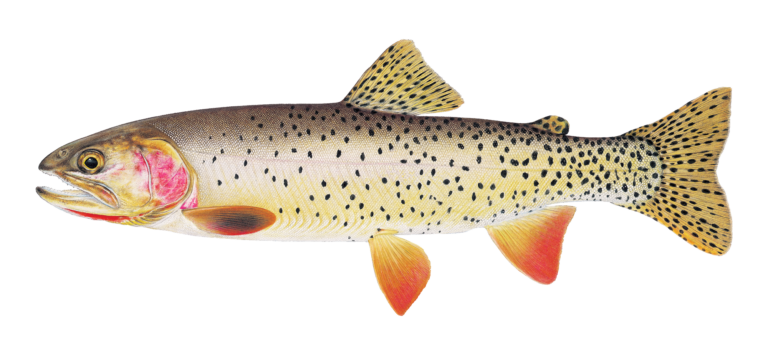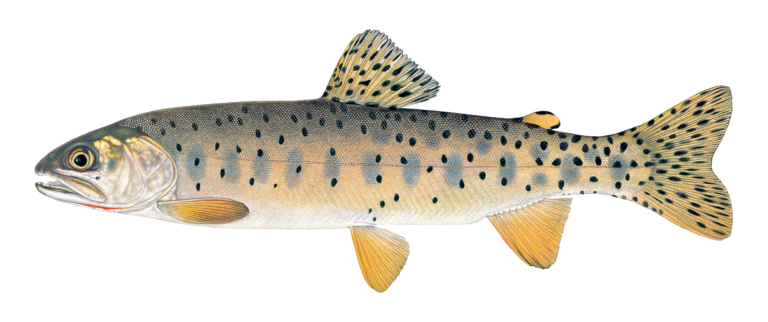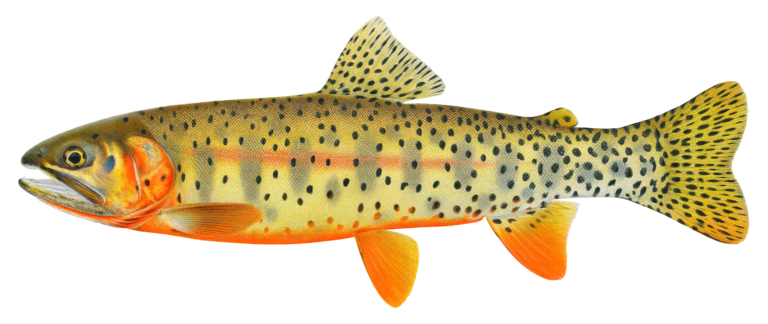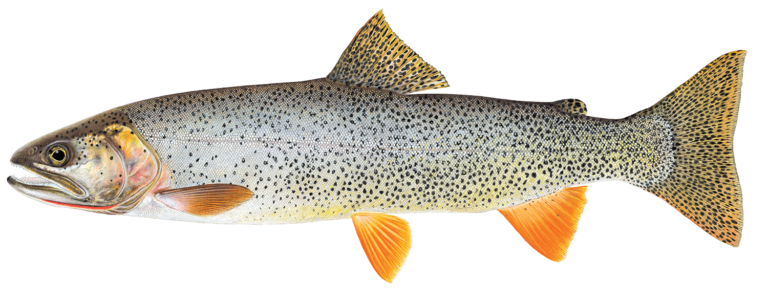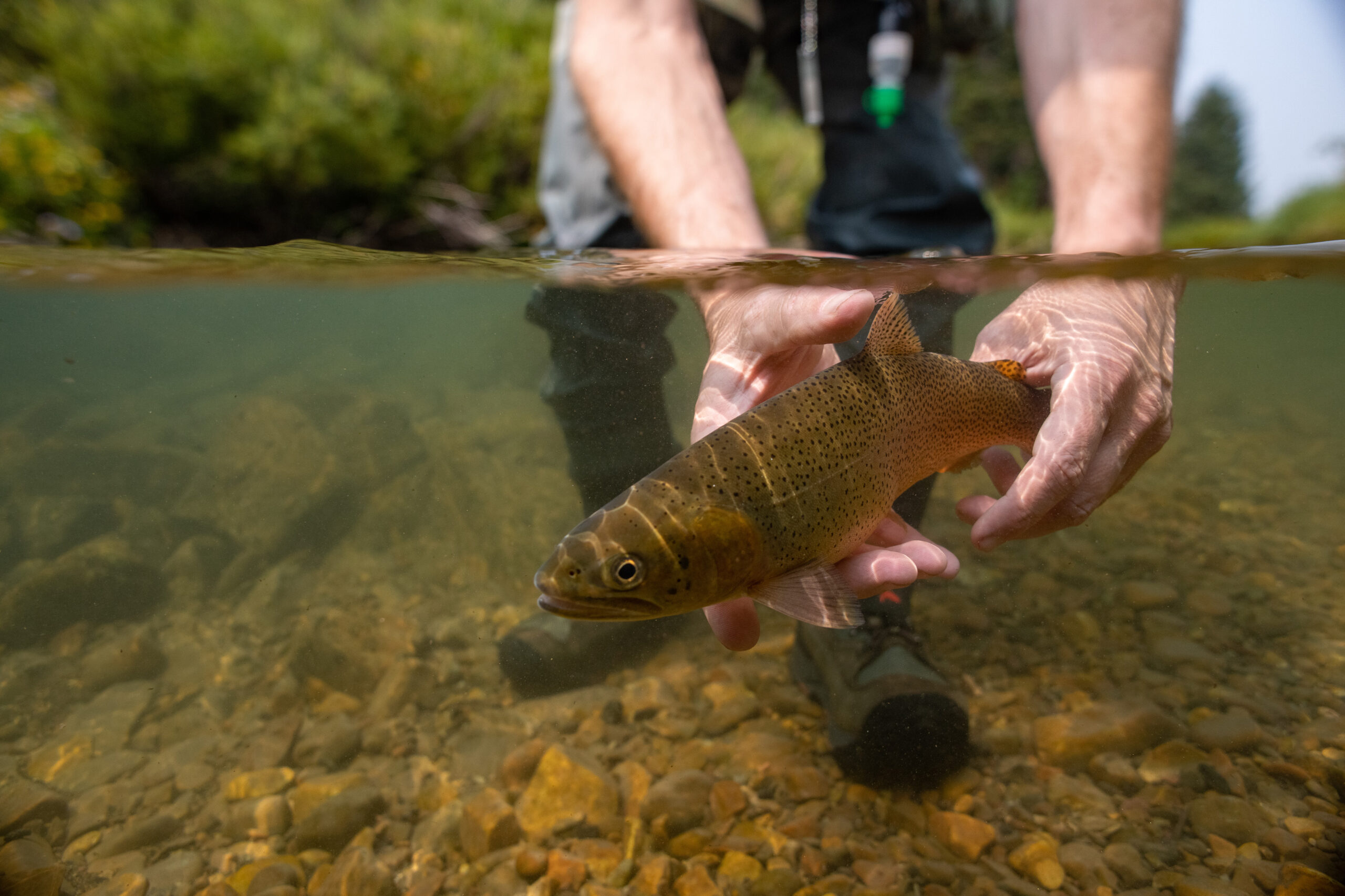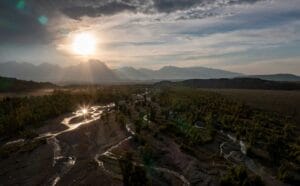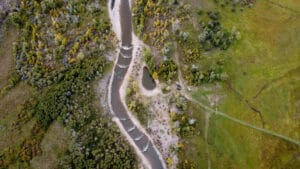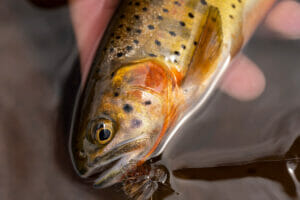Wyoming

Overview
Wyoming’s rugged landscape is home to dramatic mountain peaks, plentiful wildlife, wide open spaces, and legendary coldwater rivers and streams. These waters, which include the Yellowstone, the Snake and Salt, the Bear, the Platte and the Green, are not only an integral part of Wyoming’s identity but are also the headwaters of our nation’s major river systems. Wyoming’s public lands and cold streams provide essential habitat for native cutthroat trout. But habitat fragmentation and degradation, climate change, and non-native species present significant challenges to the state’s rivers and its wild and native trout. To safeguard their future, Trout Unlimited staff, volunteers, and partners are reconnecting streams, restoring habitat, and recovering trout populations across the state.
Threats & Opportunities
Climate change is expected to result in earlier runoff, drier watersheds, and warmer stream temperatures on Wyoming’s waters. These impacts will cause additional strain on cutthroat populations, with less connected river systems and degraded habitat. Increased agricultural and municipal water use and development continue to threaten the health of these important coldwater habitats. Federal, state, and foundation investments in recovering healthy rivers and thriving cutthroat populations provide an opportunity.
How We Work
Reconnection and Fish Passage
From the Snake Headwaters to the Green, replacing culverts and installing fish screens throughout Wyoming reconnects streams so native and wild trout can migrate to spawning and rearing reaches. With increased municipal water use, drought, and development, it is more important than ever to maintain and enhance connectivity and flow in the Headwaters State.
Habitat Restoration
We are restoring habitat quality and diversity through collaborative projects that add spawning and juvenile rearing habitat by installing instream structures, realigning channels, and reconnecting rivers to restored floodplains. Installing beaver dam analogues on Muddy Creek, for example, restores wildlife habitat and ensures native trout can thrive for years to come.
Community Engagement, Partnerships, and Policy Advocacy
Throughout the state, we are working with local partners, state and federal agencies, and collaboratives to address watershed threats and opportunities. “One TU” is stronger than ever in Wyoming: In 2023, TU grassroots and staff partnered with local organizations, federal and state agencies, and decision-makers to block proposed reductions in flows from Jackson Lake Dam that would have imperiled wild trout fisheries in the Snake River.
Scientific Research, Monitoring, and Planning
As climate change, drought, and other threats threaten Wyoming’s watersheds, we are using the best available science to address water quality and quantity in the state.
Partnerships
Trout Unlimited partners with federal and state agencies to maximize restoration impact on America’s working lands and waters.
How You Can Help
Wyoming Conservation Team
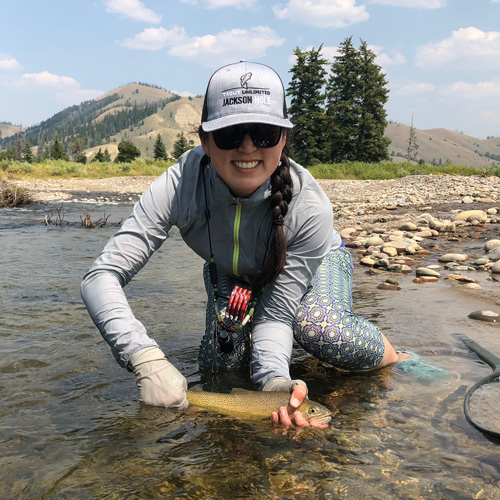
Leslie Steen
Wyoming State Director
leslie.steen@tu.org
Wyoming State Director
leslie.steen@tu.org
Priority Waters
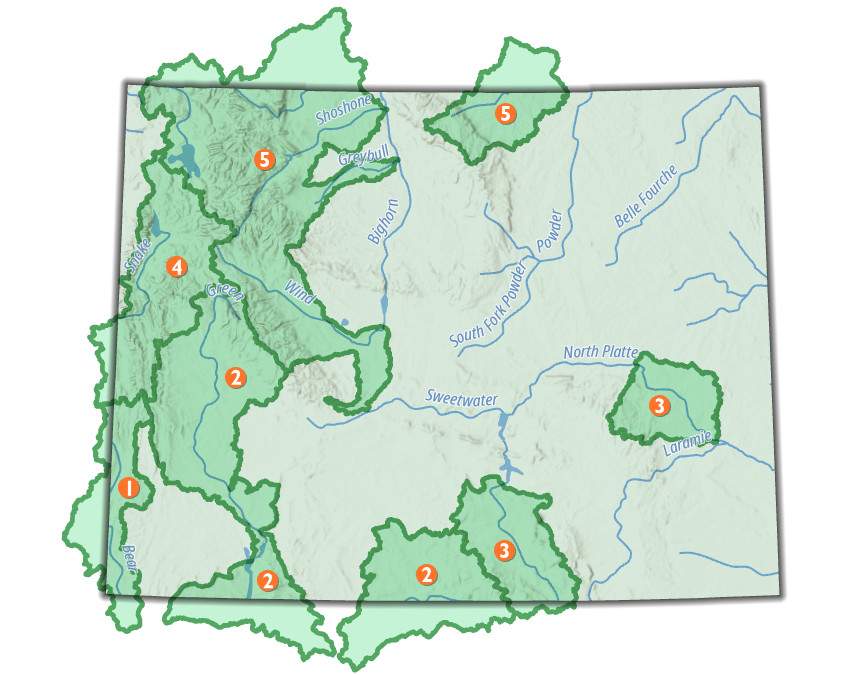
-
Bear River Basin
In the Bear, home to the Bonneville cutthroat trout, we are reconnecting waters to improve native trout migration, restoring in-stream habitats using low-tech approaches like beaver dam analogues, protecting riparian areas, and removing or replacing barriers to fish passage, including dams. This Priority Water includes the Upper Bear and Central Bear subbasins.
-
Green River Basin
Including the Upper Green, New Fork, Upper Green-Slate, Flaming Gorge Reservoir, Muddy, and Little Snake subbasins, this area is critical for Colorado River cutthroat trout. Here, we are reconnecting and restoring habitat, improving watershed health, and building a growing water-leasing market to provide higher late-season flows for native fish populations.
-
Platte River Basin
The Platte, including the Upper North Platte and Glendo Reservoir subbasins, is home to wild trout and other native fish and wildlife. Water development, climate change, and drought are a threat. TU is working to reconnect wild trout habitat and improve water quality.
-
Snake and Salt River Basins
We work with local, state, and federal partners in the Snake Headwaters Gros Ventre, Greys-Hoback, and Salt subbasins to reconnect and restore habitat for the Snake River cutthroat trout, improve the health of the watershed, and increase coordination around watershed priorities. Since the Snake River Headwaters Initiative launched in 2016, more than 36 miles of stream have been reconnected, and $9.2M invested in the watershed.
-
Yellowstone River Basin
Including the Yellowstone Headwaters, Clarks Fork, North Fork Shoshone, South Fork Shoshone, Shoshone, Greybull, Upper Wind, Little Wind, and Upper Tongue subbasins, this watershed is home to Yellowstone Lake and the Yellowstone cutthroat trout. We are working to protect and restore Yellowstone cutthroat populations by reconnecting stream habitat, restoring water quality and ecosystem diversity, and, with partners, monitoring and reintroducing native cutthroat populations.

